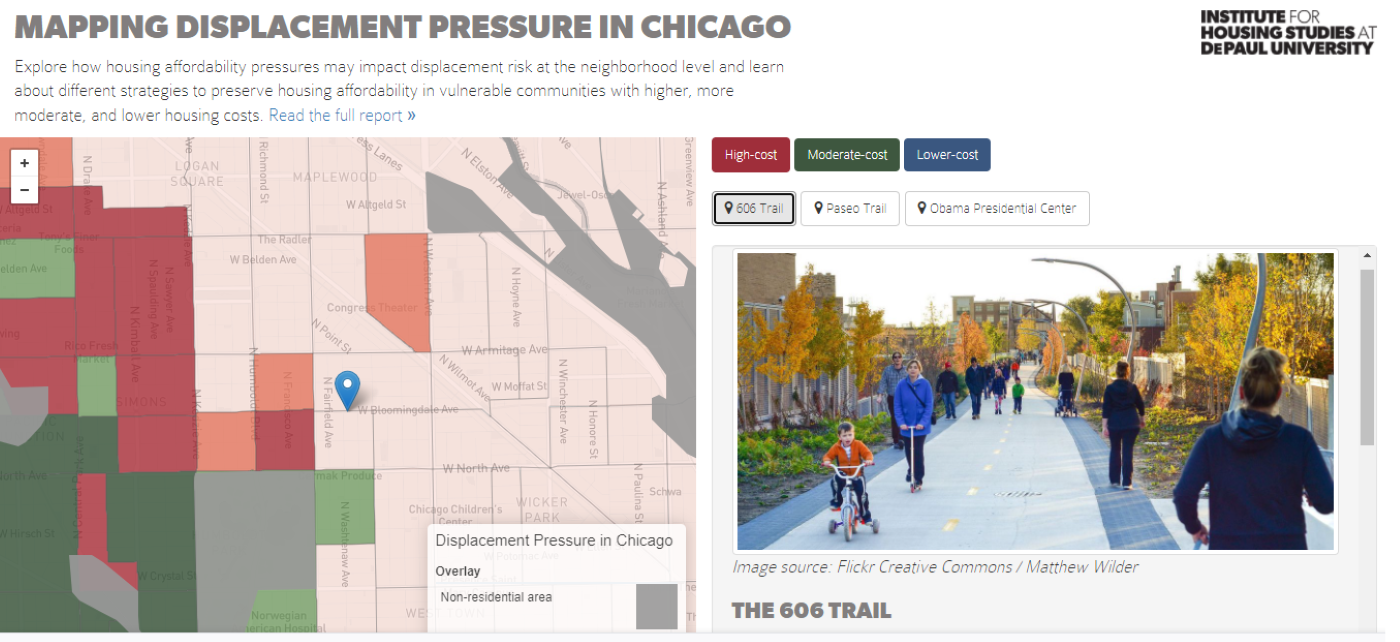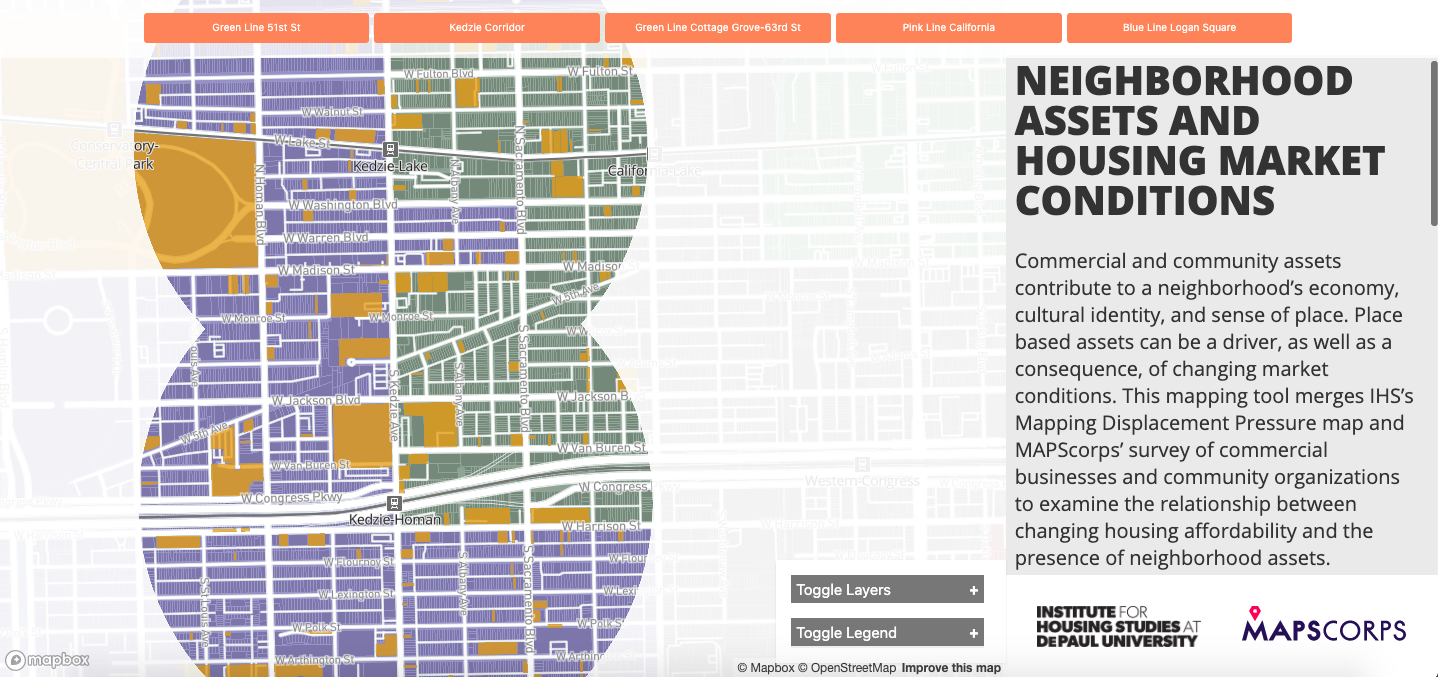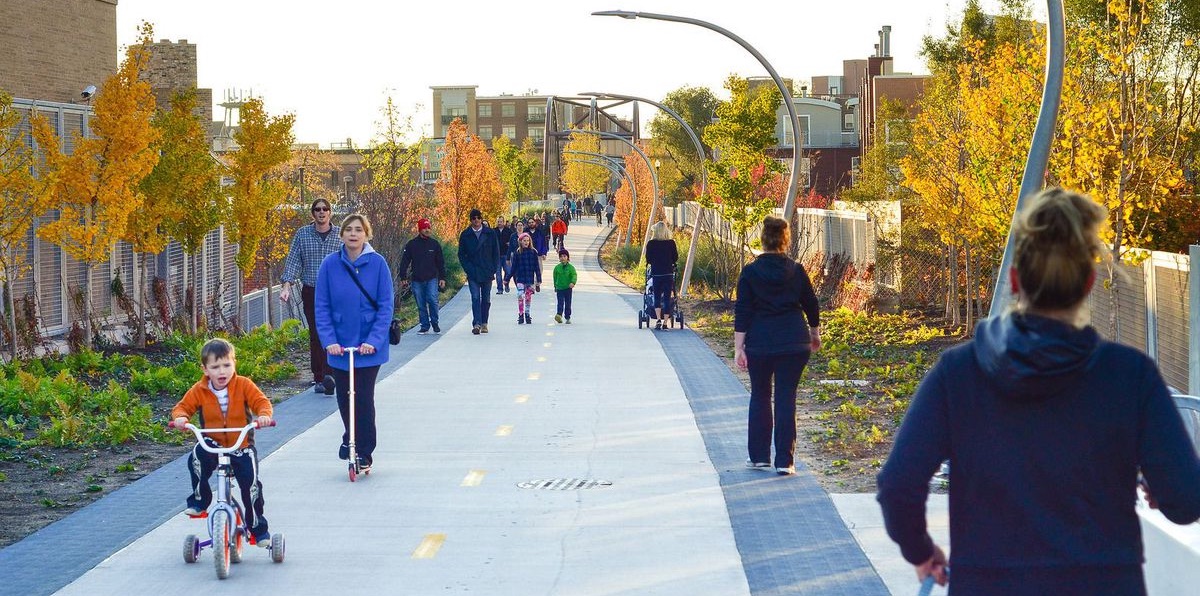Articles tagged 'Displacement Risk'
Can a new housing development revitalize Bronzeville without displacing residents?
Mapping Displacement Pressure in Chicago, 2021
IHS’s Mapping Displacement Pressure in Chicago project supports ongoing and future public investment decisions by creating a leading indicator to identify neighborhoods where vulnerable populations may be experiencing affordability pressures and displacement risk from increased housing costs.
This is the city's new tool to chill gentrifying hot spots
Following the Yellowlined Road
Understanding Displacement Pressure for Community Assets: Results from the Connect Chicago Innovation Program
Through the City Tech Connect Chicago Innovation Program, the Institute for Housing Studies at DePaul University (IHS) and MAPSCorps teamed up to create data indicators, sustainable processes, and tools to help community organizations access, analyze, and compare neighborhood-level data that can be leveraged to support local policies and issues.
How city officials propose to preserve Woodlawn’s affordable housing
Invisible Evictions: As Developers Flock To Logan Square And Pilsen, Renters Quietly Forced Out
U of C pays $20 million for new Jewel-Osco in Woodlawn
Officials Working To Prevent Displacement In Woodlawn
Displacement Pressure in Context: Examining Recent Housing Market Changes Near The 606
This report goes “under the hood” of our Mapping Displacement Pressure in Chicago data to highlight how house prices are changing in the neighborhoods around The 606 and identifies potential opportunities to preserve affordability in surrounding communities.


